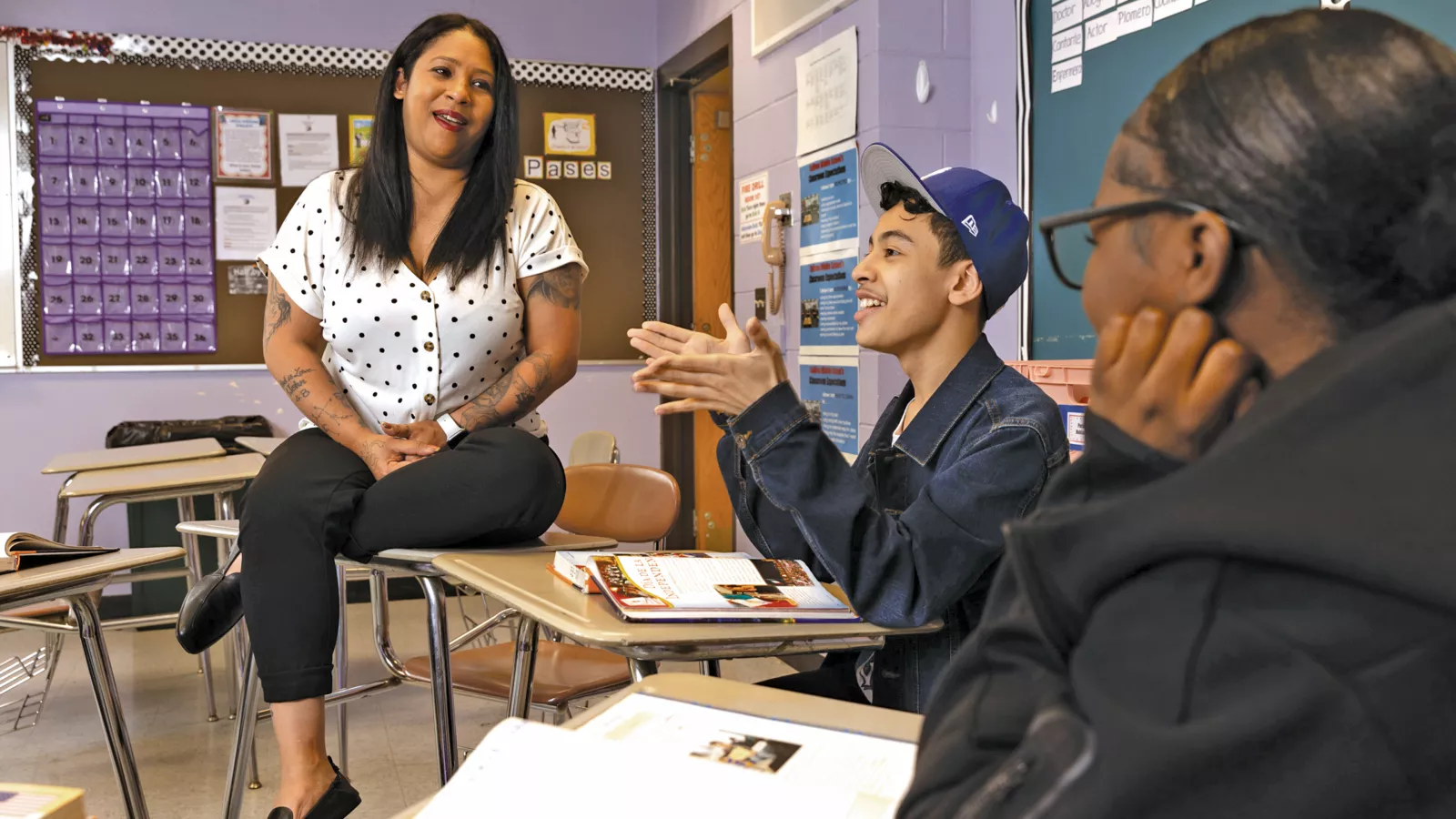1. Forget lesson plans
Focus on student relationships first—and learning will follow, advises Yahaira Rodriguez, a Worcester, Mass., paraeducator.
“Just sit down. Talk to them. What’d they do over the summer? Students want to feel seen by you as more than just a test score,” she says.
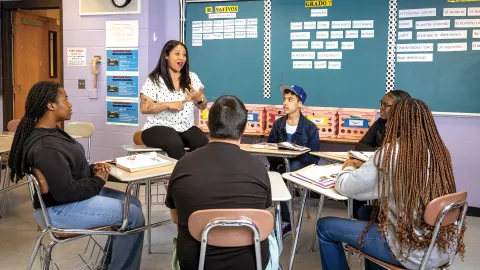
Rodriguez’s students often ask her: “Are you married? Do you have kids? Can I see pictures?” She always answers. (No, yes, and of course!) Relationships are a two-way street.
“There’s always been this distinction between educator and child, but we have to let them see us as imperfect human beings, too,” she says.
The time that you spend on relationships now will help everything go more smoothly in the months ahead, Rodriguez promises. When your students know you care, when you trust in each other, you become a well-functioning team that can learn and grow together.
Lastly, make an effort to pronounce their names right, she urges. Repeated mispronunciations are disrespectful and dehumanizing. And nicknames are lazy. (Fun tip: If Rodriguez mispronounces a students’ name, she gives them a candy. When they see her practicing, they know she cares.)
2. Keep a Journal
Write down what works—and doesn’t—in your classroom. The act of reflection will help you better respond to students’ needs in the future. Take inspiration from National Teacher of the Year Rebecka Peterson, who wrote about something good that happened every day in her classroom for 1,400 days! Finding the good has made her a better teacher, she says.
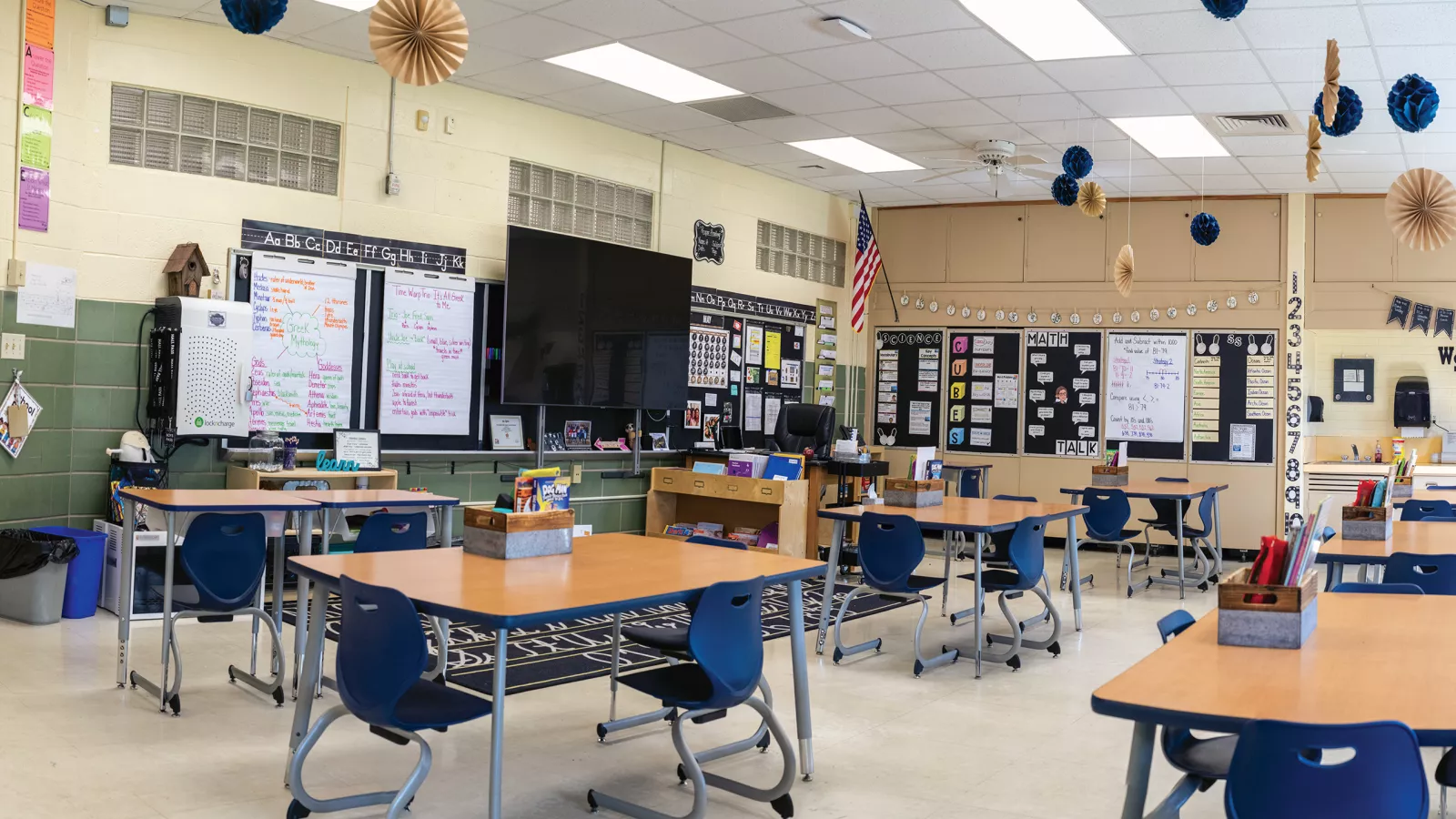
3. Create a Space That Supports Your Goals
After 29 years of teaching, Alison Tingle knows her way around a classroom. Even better, within days of school starting, so do her students. Tingle, a second-grade teacher at West Seaford Elementary School, in Delaware, provides a neat, organized, and predictable environment.
“Anything I can do to minimize stress and unpredictability for my students is my priority. There should be no zingers! Nothing to ramp up their anxiety,” she says. “Neat and organized are my strengths. And hopefully I’m teaching them organizational skills, too.”
Set up your space to support the student behaviors you want to see and to buttress the procedures that make your class run smoothly, says Tingle, a National Board Certified Teacher. “We joke that your bedroom might be messy, but this classroom, which is your home away from home, is not. The custodians love us!”
Step inside Ms. Tingle's classroom
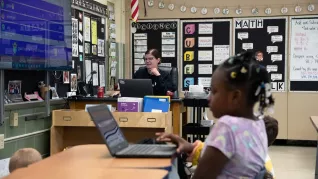

The best $300 she ever spent—Tingle tells every new teacher to get an organizational cart like the one pictured here in front of her desk. Hers has eight compartments—the top four hold students’ reading books, workbooks, journals, and work folders. At the start of the year, Tingle tells students, “When we finish with word-response cards, boys and girls, put them in the yellow folder.” Eventually she doesn’t have to say a word. They know. The bottom compartment holds other subject-matter content.
Andrew Tawes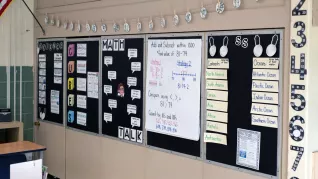

Anchor charts—Anchor charts can be helpful, but let’s not go overboard, Tingle suggests. “I typically just keep up anchor charts on our current tasks,” she says. “If a kid can’t focus, I’m of the mindset that more stuff will just make it harder.”
Andrew Tawes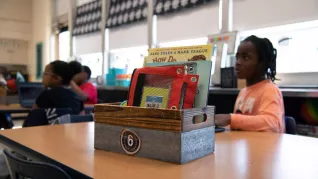

Tabletop caddies—These boxes hold shared pencil pouches, books, and Play-Doh. Tingle gives her students brain breaks every 30 to 45 minutes and lets students use the Play-Doh. Tingle used to have a “calming corner” for students, but found she no longer needs it. “Brain breaks have reduced the need for the calming corner,” she says.
Andrew Tawes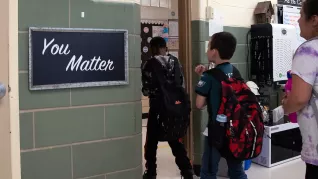

You matter—By the door, Tingle has a poster that says “You Matter.” On their way out of the room, every student taps it and says, “I matter!”
Andrew Tawes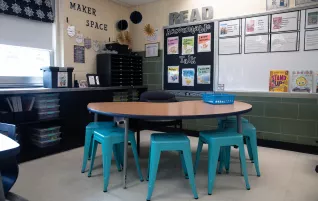

Tables versus desks versus islands—Tingle strongly prefers four-person tables for the sense of community they build. Also, six tables take up a lot less room than 24 desks! As the year goes on, Tingle rearranges tables and students, depending on their evolving needs. She also preserves an island for students who need to work in isolation. “Maybe this week Alison is having a difficult time because her mom and dad are going through a divorce, so she needs to be up here with Ms. Tingle,” she says.
Andrew Tawes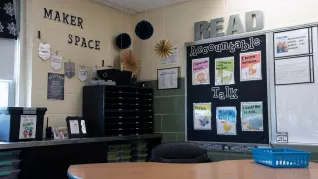

Mailboxes—In the corner of her classroom, Tingle installed a set of office mailboxes, one per student. But it's not her space—it's her students'. When she returns corrected work to them, "They do their own filing! It's all on the kids," she says. In this way, the students take on the responsibility to storing their work neatly and taking it home to their parents.
Andrew Tawes4. Set an intention or goal
Think about who you want to be as an educator and what you want to accomplish in the year ahead—for your students, your colleagues, and yourself. Maybe you need to take better care of yourself or focus on a specific aspect of your professional practice. Self-reflection is key. When setting an intention, consider your strengths, weaknesses, motives, and desires.
When we asked NEA members about their goals or intentions for the new school year, this is what we heard:
Quote byLeah Hood , high school social studies teacher, Lakeville, Minnesota

Quote byJulie Spaargaren , paraprofessional, Westmont, Illinois
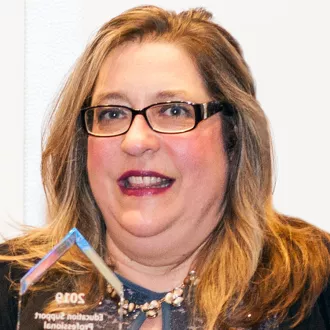
Quote byRahaf Othman , teacher, Oak Lawn, Illinois

Quote byMichelle Burton , librarian, Durham, North Carolina
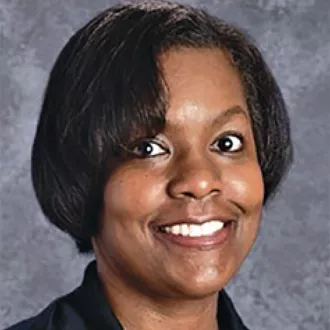
Quote byNicole Nichols , paraprofessional, Bloomington, Illinois
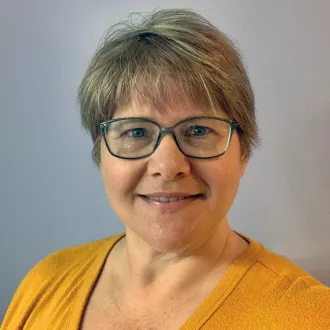
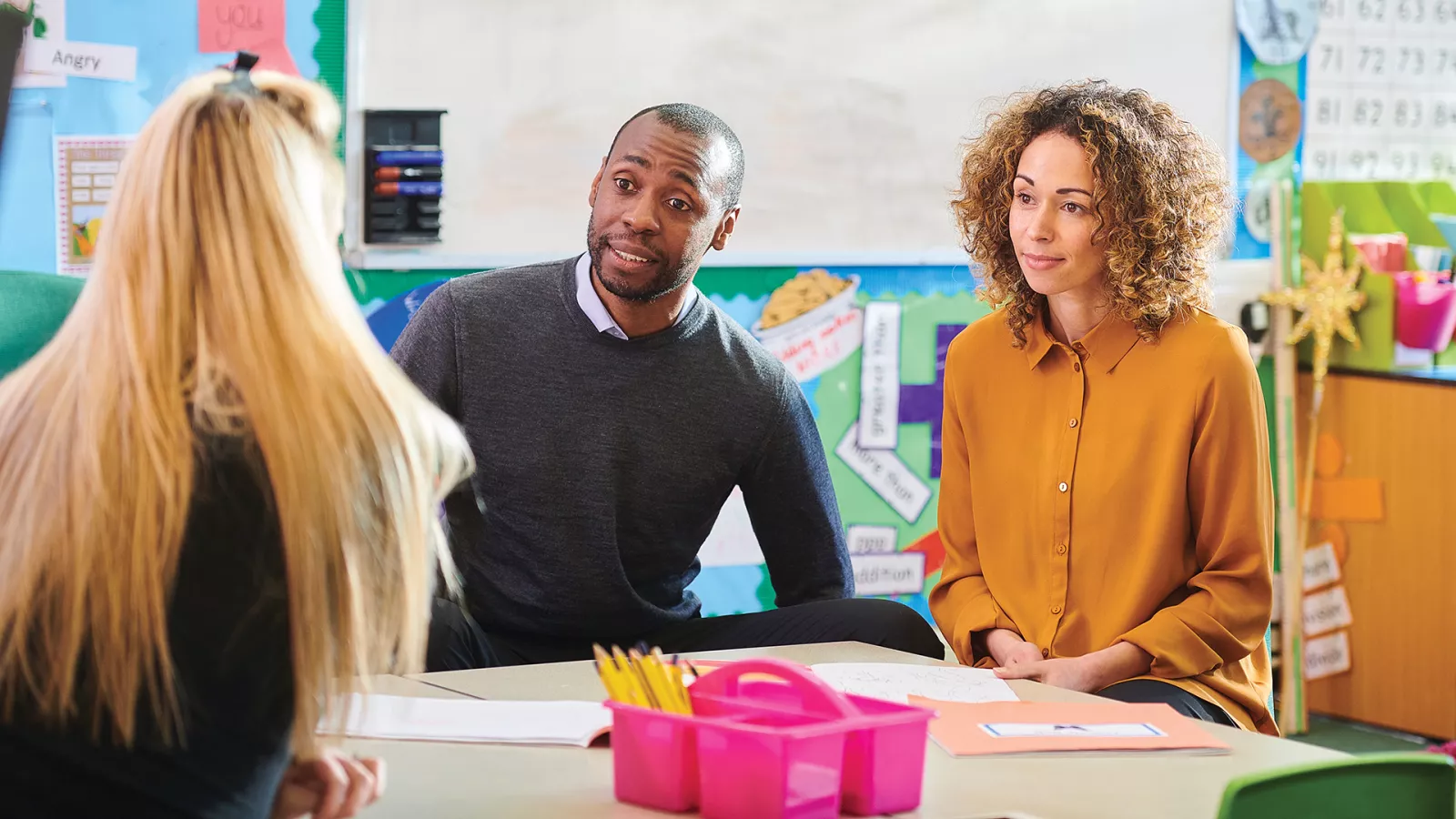
5. Meet the parents
Reach out as soon as you can to introduce yourself to parents and set a good foundation for the school year. A quick survey can be helpful. Find out how and when they prefer to be contacted: by text, email, or phone, and if they will need English translation services. Ask them to tell you about their child’s interests!
For more tips see: “Better Communication with Families Starts with the Basics.”
6. Get serious with your union
Your local and state unions have a calendar of events for this school year. Tap into those calendars now, advises Washington high school teacher and union leader Gabrielle Wright.
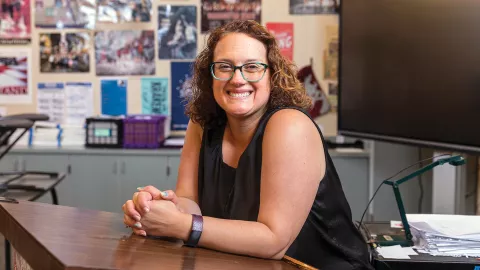
The offerings for professional development— whether you’re a teacher or support staff member—are often geared toward recertification.
“Ask yourself: What do you need for recertification? Or what are you hoping to improve in your practice?” Wright says.
When she gets her class list at the start of the school year, she also turns to NEA’s library of micro-credentials for quick help.
“There’s a lot of really brilliant things in there!” she says.
Whether you want to brush up on trauma-informed supports or learn about LGBTQ+ anti-bias curriculum, there’s a microcredential to help you meet students’ specific needs.
If you don’t see what you’re looking for in your union’s offerings, get involved.
“Is there an equity event you’re interested in leading?” asks Wright. “Is there a book study you want to propose? Maybe you took a course that inspired you, and you want to share it with other educators.”
Consider this, she urges: “What can you bring to the table?”
Professional learning at your own pace
Check out our extensive library of micro-credentials, free to NEA members.
7. Make a plan to take care of yourself
Don’t wait until the dark days of winter to focus on your physical and mental well-being. Instead, take steps at the start of the school year so you can stay healthy in the months to come. Taraja Shephard Allen, a school counselor who now works for the Ohio Education Association, provides trainings on self-care to fellow educators. She offers this advice for establishing good habits:
Create daily routines so that your days are as predictable and stressfree as possible. Lay out your clothes the night before, pack lunch in advance, and make sure to have a go-bag of snacks.
“When things go haywire and you’ve got to cover an additional class or drive an extra route, you need your snacks,” she advises. Also, and this is key: Decide on a daily shut-down time, after which you don’t grade papers or respond to emails, and stick to it!
Set up your physical environment. Family photos, posters with affirmative messages, and other decorations or trinkets can help make you feel good. If you’re a staff person without the ability to decorate a space, Shephard Allen recommends slipping a meditation rock into your pocket. “It’s something you can hold onto, and they’re cold, so they calm you down when you’re feeling hot,” she says.
Figure out healthy coping strategies. These look different for different people. Develop interests outside of work and put them on your schedule now.
“For me, I enjoy volunteering,” she says. “It’s so soothing to feel that I’m actually making a difference.”
Also identify your “go-to people” who will listen and provide constructive advice. (Hint: It’s likely not the people in the lounge!)
Start practicing moments of mindfulness. Try taking three deep breaths when you get into your car at the start and end of the day. When you eat lunch (don’t skip lunch!) try focusing for a minute on how it smells and tastes, and on the texture of your meal, suggests Shephard Allen.
Finally, identify additional resources before you need them. Your local and state unions likely have wellness programs. Through NEA Member Benefits, you can also get one year of free access to Sanvello, an app that helps dial down the symptoms of stress and anxiety.
More on Self Care
Check out NEA’s webinar “Put on Your Own Oxygen Mask First: Cultivating Healing and Wellbeing in Ourselves,” where participants learn strategies for self-awareness and self-management.

Education News Relevant to You
Get more from


